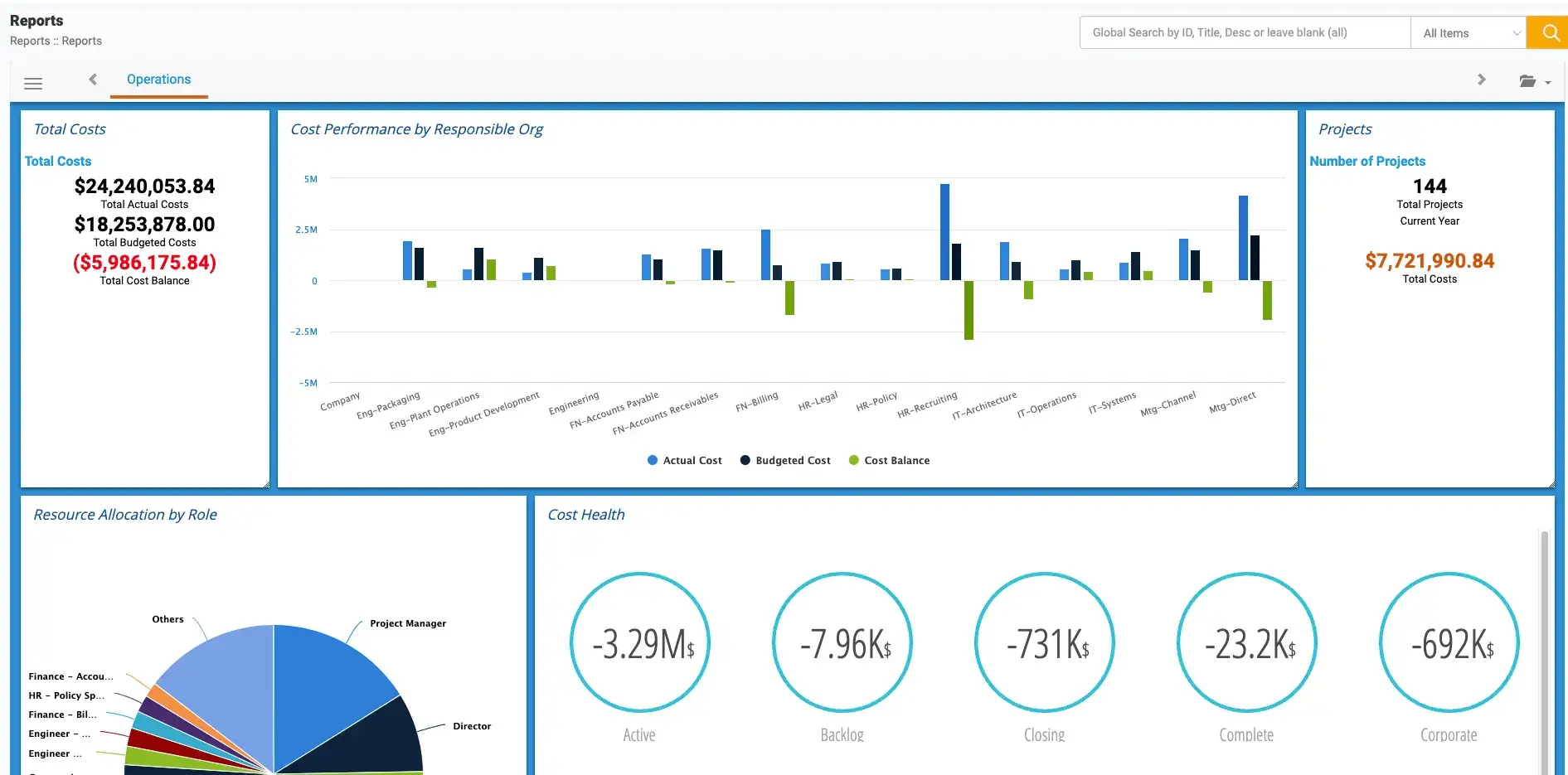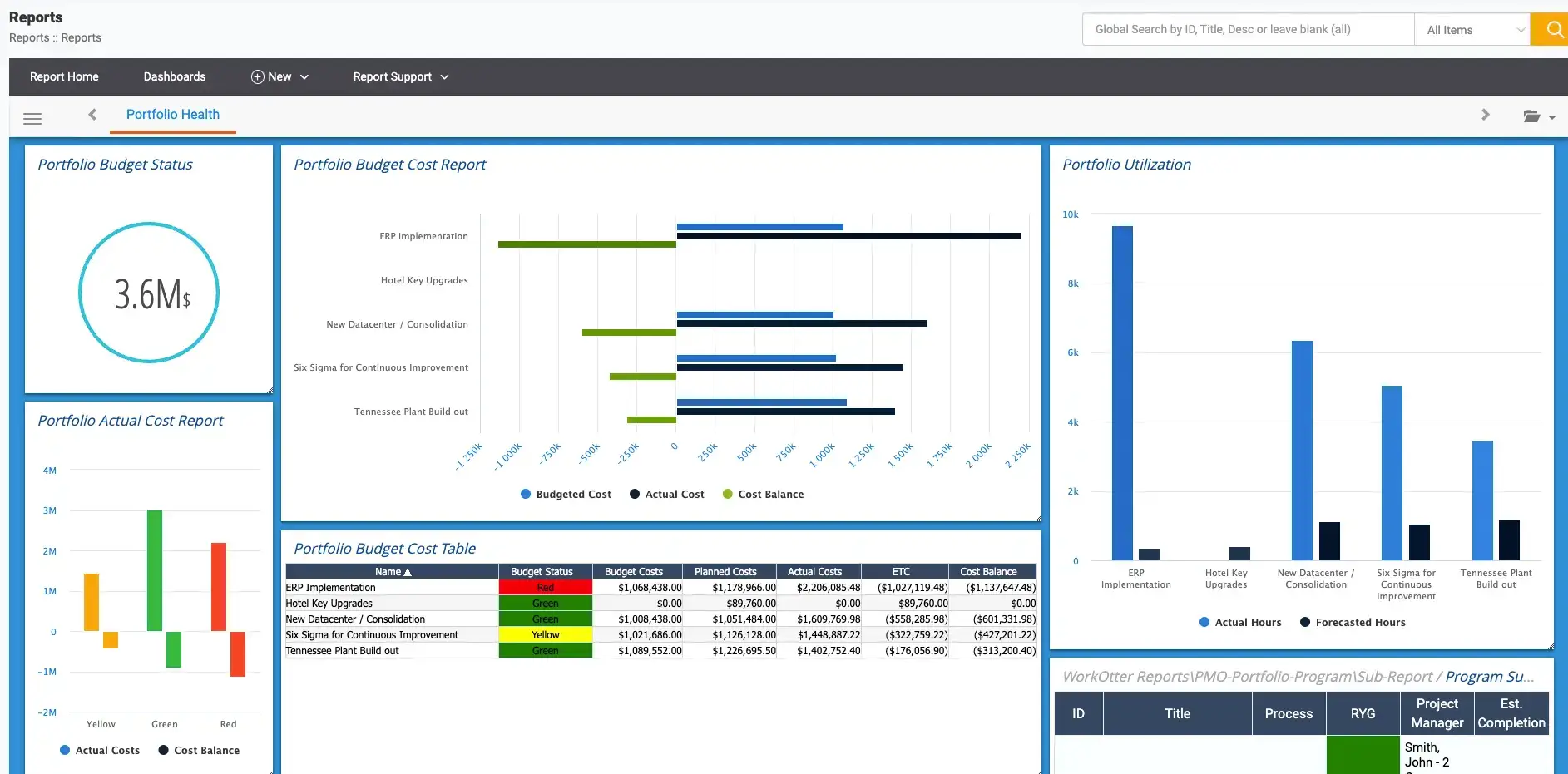Why PPM is Essential for Organizational Success
Maximizing your business’s overall success and financial growth requires a structured, strategic approach to planning and executing the projects that will be the most valuable for your business.
Developing a strong project portfolio management (PPM) approach is essential to realizing the benefits of the projects you set out to do. According to the Project Management Institute’s 2023 Pulse of the Profession projects that were most successful prioritized benefits realization management, project management maturity, and organizational agility. These are key elements of project portfolio management, and without them, companies risk millions of dollars and people hours on low-value projects that underdeliver or even fail.
Here are 15 benefits of project portfolio management (PPM) that explain how developing this discipline is critical to achieving more efficient project delivery, more empowered teams, better insights and most importantly, creating alignment throughout the organization.
Top 15 Benefits of Project Portfolio Management
The difference between Project Portfolio Management and simple Project Management is the ability to control and manage across many projects. Without PPM companies don’t have a source of truth for reliable data to help them manage better and grow more efficient processes. PPM brings a host of benefits to an organization, here are 15 of the more prominent benefits.
- Improved resource allocation and utilization – the ability to control resource allocations across multiple projects is one of the most recognized benefits of PPM. While resource management might include budgets or technology, the most common type is managing staff assignments. Staff must be managed effectively to ensure the right skills are on a project, the teams are balanced in terms of workload, and key skills are not underutilized. A PPM tool with resource leveling and forecasting provides visibility into future demands and potential shifts in schedules.

- Enhanced strategic alignment – suppose your company goals are to grow by a certain percentage within five years. Your objectives should align with that target, and the projects most likely to drive that goal to realization need to be prioritized. Aligning projects with strategic objectives requires a process for placing a value on them. Scoring models or project prioritization frameworks can be used in conjunction with a PPM tool to ensure the right projects are receiving the focus of the entire organization.
- Better decision-making and prioritization – understanding comprehensive project data and insights in real-time helps PMs and PMO leaders make better data-driven decisions. Knowing which projects are of a more strategic value will also aid in the understanding of where to focus when project health lags or resources are overtaxed.
- Increased project visibility and transparency – with a portfolio-level view, PPM enhances visibility across all projects, allowing stakeholders to see how each project is performing. It fosters accountability by tracking progress, ensuring that teams stay on target and deliver results. Examples of enhanced visibility include: real-time status reporting, audit trails, and dashboards that surface project health and progress toward goals
- Effective risk management and mitigation – risk management is the process why which risks are identified proactively and strategies for mitigation are developed. Especially critical for regulated industries where failing to identify a risk until it is too late can cost millions of dollars in fines and could significantly delay a project (or even end it). Proper risk management should include tracking granular project-based risks as well as risk assessment performed at a portfolio level to understand risks among interdependent projects
- Cost management and budget optimization – a portfolio view of budget and cost delivers the necessary information required to understand when an initiative is tracking within a budget, or more importantly, when it is projected to exceed budget

- Improved resource capacity planning – projecting how staff will be used, on what projects and for how long, helps to understand and control a hiring pipeline. It can also inform training for key resources, or aid in prioritization of new projects.
- Better collaboration and communications – in the 2024 Pulse of the Profession Report Senior leaders report that their teams need new skills for the evolving work environment: 64% of their teams need new or different technical skills (e.g., data analysis, agile project management practices), 61% power skills (e.g., communication, collaborative leadership) and 54% business acumen skills (e.g., understanding the organization and/or industry). Enhancing these skills is a key benefit of using a PPM tool purpose built to facilitate strategic project management.
- Enhanced performance tracking and reporting – Understanding what “good” looks like is the result of tracking both leading and lagging key performance indicators (KPIs). Regular reporting of project metrics and progress toward KPIs will inform executives and stakeholders and will give the PMO critical, actionable data. With customized dashes and the ability to report at a project and portfolio level, every manager is capable of taking corrective action, identifying areas for improvement and understanding where there are opportunities to accelerate.
- Streamlined project execution and delivery – while many PMOs are comprised of trained project management professionals, there is always a need to control for project execution and delivery. Prism PPM was purpose-built to follow project management best practices like those contained in the Project Management Body of Knowledge (PMBOK).
- Facilitating change management – maturing a PMO involves facilitating change throughout the organization. Change management is a continuous process but according to Gartner, while 74% of leaders say they involved employees in creating a change strategy, only 42% of employees felt included. A PPM management tool and a project portfolio governance structure will solve this problem by aligning everyone around the practices that deliver better results.
- Standardization of processes and best practices – creating repeatable processes and standards to follow is easier at a project portfolio level. Reduced project variability, improved quality, and consistency of delivery are just some of the benefits of codifying and socializing best practices. For example, in a regulated industry like a government agency, a standard workflow with built in stage gates will enable even a new project manager to quickly understand the project plan and flow, avoiding costly mistakes and accelerating their understanding.

- Supporting organizational agility – change happens, that’s a fact. How your organization reacts to change is dependent on your ability to quickly assess and react. A PPM tool like Prism PPM facilitates the visibility needed to make better decisions and understand their impact. Features like dynamic project re-prioritization and “what-if” scenarios, allow PMO leaders to surface proactive changes that will de-risk delivery in the face of change.
- Portfolio optimization and value realization – as discussed above, realizing the planned benefit of every project is ultimately the goal, but it can’t happen without a portfolio view of project health and progress and the necessary data to support calculations of value realization. Your PPM software should be the source of truth when it comes to project data, allowing you to easily gather data and report at a granular project and aggregated portfolio level.
- Enhanced stakeholder engagement and satisfaction – communication, transparency, better reporting and improved results are tangible examples of how stakeholders experience the benefits of a PPM solution. Whether it is with free view-only licenses that allow access to the PPM tool, or a regular and reliable set of reports, keeping everyone informed and working toward a common goal results in more engaged and happier stakeholders.
PPM in the real world – Staying nimble in a time of crisis.
The right PPM tool makes staying on track and resilient in the face of change much easier. During the global pandemic, a state board of health was charged with consolidating several departments to more efficiently staff projects and start them fast. With Prism PPM the head of the PMO was able to get critical visibility into resource capacity and project demand, bringing together many disparate departments to ensure the right initiatives were prioritized and staff was ready to respond.
Prism PPM customers share a common goal: continually optimizing and maturing their project portfolio management to deliver better results. The right solution for PPM success is the one that creates alignment with strategic goals, provides the necessary leverage to get work done well and efficiently, delivers insights to facilitate data-driven decision-making, and empowers leaders in the PMO to prioritize the work that truly matters and drives the business forward.
Prism PPM is here to help you understand your choices for Project Portfolio Management.
Our Buyer’s Guide breaks down the various options in the software marketing and provides checklists to help with needs assessment and vendor selection.
We are also available to show you how Prism PPM can help you improve your project outcomes, empower your PMO, and align every project with organizational goals.
Book a demo with us to learn more.